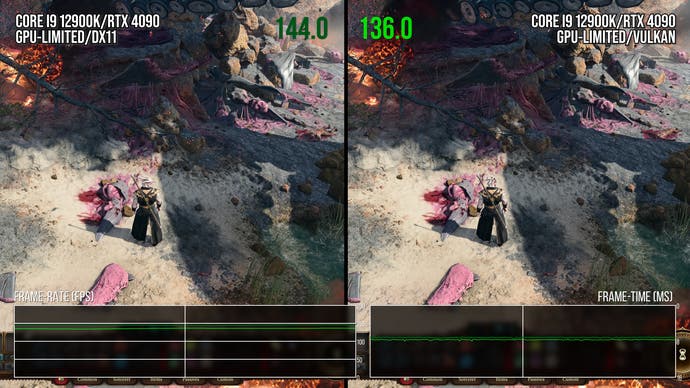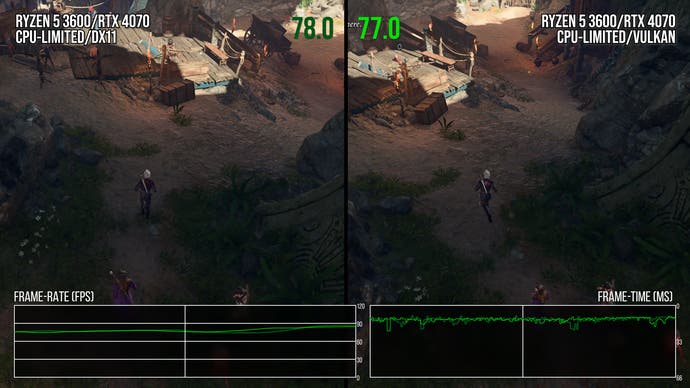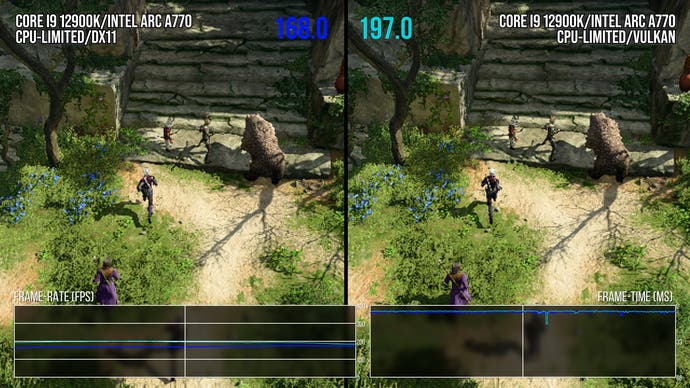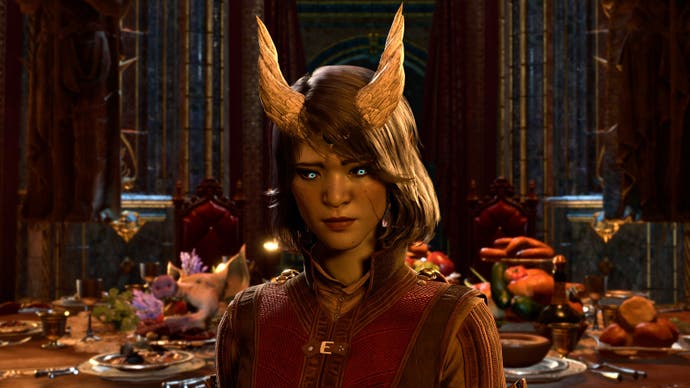DirectX 11 vs Vulkan: which is best for Baldur's Gate 3?
Early DF recommendations ahead of our full PC coverage.
The Baldur's Gate 3 launcher offers a choice between DirectX 11 and Vulkan - so which is the best in terms of performance and stability? The launcher defaults to DX11, while Larian support documents suggest Vulkan, so in the face of this conflicting advice there's only one thing to do: get testing. We trialled both options on a range of systems with Nvidia, Intel and AMD graphics card to tease out any differences and come up with some recommendations.
Following our testing, we do have some answers - but things aren't as straightforward as we'd hoped, with different system configurations producing different recommendations.
Let's start with the most common example - being GPU-limited (ie your graphics card showing ~99 percent utilisation*). This is a likely scenario for running at 1440p or higher resolutions, with higher graphical settings, on a PC that meets or exceeds the game's recommended specifications (RTX 2060 Super/RX 5700 XT, paired with a Ryzen 5 3600/Core i7 8700K).
- With an Nvidia GPU, DirectX 11 runs around eight percent faster than Vulkan.
- With an AMD GPU, DirectX 11 and Vulkan run nearly identically.
- With an Intel GPU, DirectX 11 runs around 25 percent faster than Vulkan.


*Note: You can check GPU limitation using the Performance tool in the Windows Game Bar overlay (Win + G), by using tools like MSI Afterburner + RTSS, or by leaving Task Manager's Performance > GPU window open on a second screen.
However, things change if you are CPU-limited (ie your GPU is showing less than ~99 percent utilisation), which is most common at 1080p or lower resolutions and/or with older CPUs.
In a static scene devoid of NPCs, both AMD and Nvidia GPUs ran ~21 percent faster in Vulkan than in DX11, while Intel GPUs ran 29 percent faster in Vulkan. However, this advantage is only maintained in scenes with few characters.
In combat scenarios or in a populated town area, NPC calculations become the most expensive CPU process. When CPU-limited in these NPC-driven moments using Nvidia and AMD GPUs, Vulkan and DX11 perform more similarly - with DX11 actually taking the lead in average frame-rate by around four percent. In contrast, Intel GPUs show Vulkan being 13 percent faster in this scenario.
In such scenes both graphics APIs show a similar level of frame-time stability, with small hitches occurring at similar moments as the area is traversed around NPCs. It should be noted though that our AMD GPU with DX11 and Vulkan produced more variable frame-times than our Nvidia and Intel GPUs in both APIs, with larger spikes recorded with the AMD GPU - up to 270ms in Vulkan (vs 27ms for Nvidia and 23ms for Intel) and up to 107ms in DX11 (vs 20ms for Nvidia and 42ms for Intel).


In terms of overall recommendations then, I'd suggest DirectX 11 is a better choice than Vulkan for most users with Nvidia and AMD graphics cards, especially those with relatively modern CPUs that meet BG3's recommended specifications. While Vulkan did run better in static scenes when CPU-limited, its poorer performance than DX11 in NPC-rich areas is problematic, making DirectX 11 a better choice overall.
DX11 also has other positives in its favour, namely the double and triple buffering options work, while in Vulkan triple buffering presents with full-screen tearing. Similarly, my colleague Will Judd has experienced multiple crashes running in Vulkan that weren't repeated on DirectX 11, so stability is still a concern there. Vulkan could perhaps be considered for very old CPUs where reaching 60fps is a struggle, but for the average user DX11 feels like the best all-rounder.
For Intel GPU owners, the decision is a bit harder - DX11 is the better bet in GPU-limited scenarios where you're targeting 60fps, but if you're targeting 120fps+ then Vulkan is perhaps the best choice.
Finally, we didn't spot any differences in graphical options or graphical quality between the two APIs, so they seem to differ only in terms of performance and (potentially) stability. We'll continue testing Baldur's Gate 3 as we work up our full PC coverage, but we hope you appreciate this early look at one aspect of PC performance.









